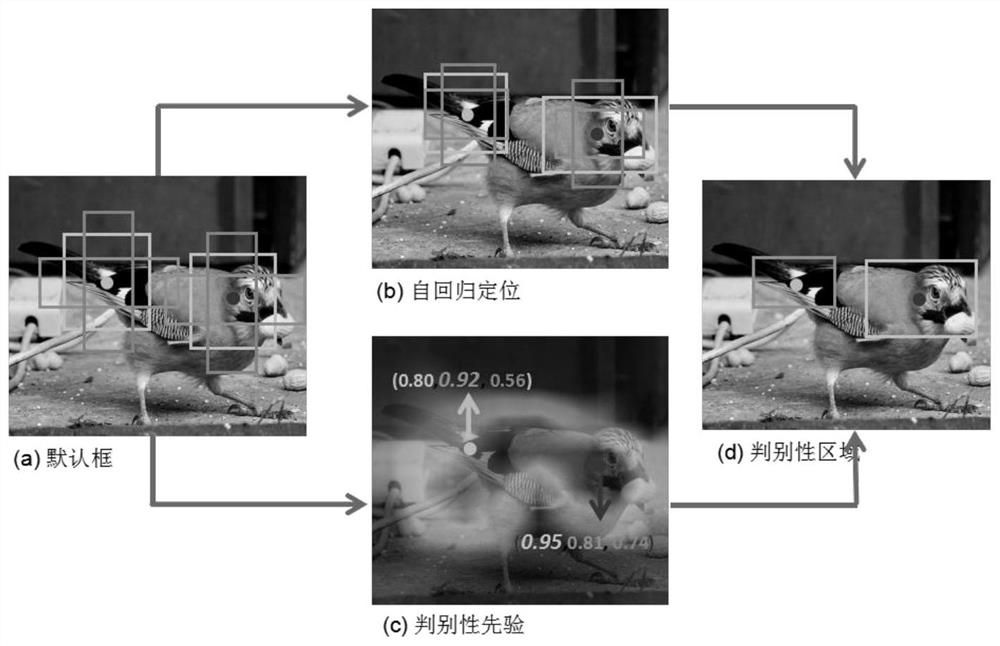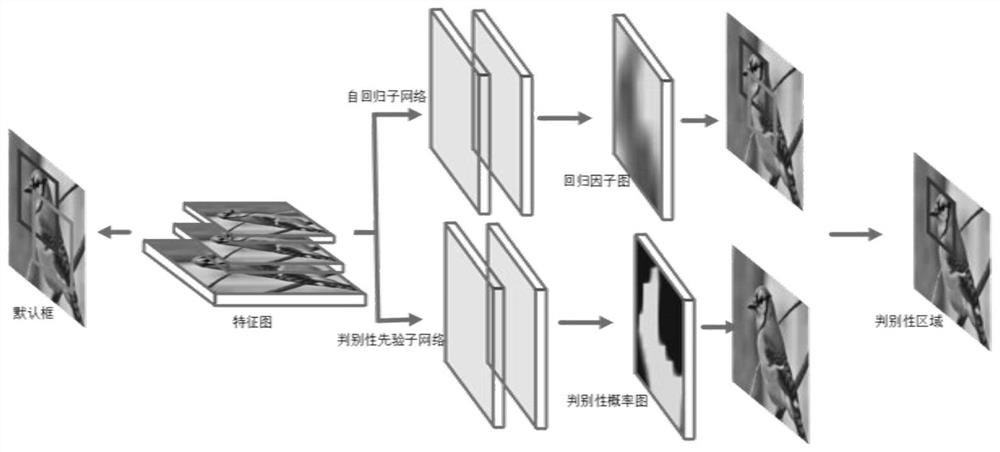A fine-grained image classification method based on discriminative learning
A classification method and fine-grained technology, applied in the field of computer vision, can solve problems such as high computing costs, achieve accurate and effective classification, and reduce the number of effects
- Summary
- Abstract
- Description
- Claims
- Application Information
AI Technical Summary
Problems solved by technology
Method used
Image
Examples
Embodiment Construction
[0049] In order to make the objectives, technical solutions and advantages of the present invention clearer, the specific embodiments of the present invention are further described in detail below.
[0050] Experimental evaluations are performed on two benchmark datasets: Caltech-UCSD Birds-200-2011 and Stanford Cars, which are widely used benchmarks for fine-grained image classification. Birds include 11,788 images in 200 categories. Cars include 16,185 images with a total of 196 classes.
[0051] Implementation details: In our experiments, all images are resized to 448 × 448. We use ResNet-50 as the backbone network and batch normalization as the regularization term. Our optimizer uses momentum SGD with an initial learning rate of 0.001 and multiplied by 0.1 after every 60 epochs. The weight decay rate is set to 1e-4. To reduce patch redundancy, we used Non-Maximum Suppression (NMS), and the NMS threshold was set to 0.25.
[0052] Ablation Experiments: We conduct some a...
PUM
 Login to View More
Login to View More Abstract
Description
Claims
Application Information
 Login to View More
Login to View More - R&D
- Intellectual Property
- Life Sciences
- Materials
- Tech Scout
- Unparalleled Data Quality
- Higher Quality Content
- 60% Fewer Hallucinations
Browse by: Latest US Patents, China's latest patents, Technical Efficacy Thesaurus, Application Domain, Technology Topic, Popular Technical Reports.
© 2025 PatSnap. All rights reserved.Legal|Privacy policy|Modern Slavery Act Transparency Statement|Sitemap|About US| Contact US: help@patsnap.com



